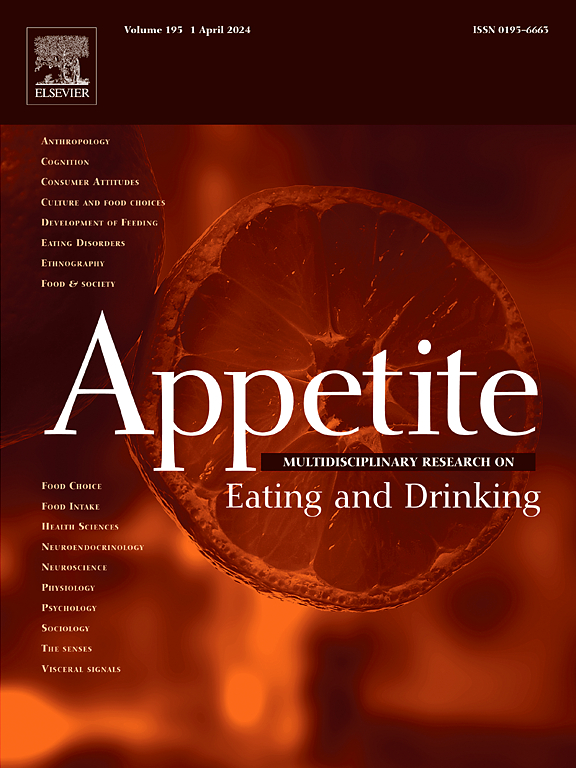Challenges and barriers to WIC participation vary by participation status and language: Findings from focus groups in Missouri
IF 4.6
2区 医学
Q1 BEHAVIORAL SCIENCES
引用次数: 0
Abstract
The Special Supplemental Nutrition Program for Women, Infants, and Children (WIC) is one of the largest federal food and nutrition program serving women and young children and has a low coverage rate of about 50 percent. There is no peer-reviewed article that compares maternal perceptions of challenges and barriers to WIC participation by language and participation status. We compare challenges and barriers faced by English-speaking mothers to those faced by Spanish-speaking mothers to enrollment and retention in WIC within each group: current participants (n = 43), prior participants (dropouts; n = 27), and eligible non-participants (n = 18), using focus groups we conducted in Missouri in 2021–2023. We used thematic analysis to generate core themes in NVivo 14. We find heterogeneous barriers to WIC participation by participation status and language spoken by the mother. While all participants identified the difficulty in attending WIC appointments as a top barrier, a higher percentage of Spanish-speaking mothers in comparison to English-speaking mothers reported it more frequently. Only eligible non-participants identified lack of information on the WIC program, its benefits, and certification requirements as barrier. Unlike common belief, language was not considered a barrier, but rather a challenge exhibited among Spanish-speaking mothers. While dissatisfaction with food alternatives is a top challenge for current WIC participants, it only becomes a barrier for Spanish-speaking mothers but not for English-speaking ones. Findings highlight the importance of designing creative ways to inform WIC-eligible mothers about the program's benefits and enrollment requirements, and to consider differences by maternal tongue and culture. Increases in food amount and variety may lead to higher participation rates. Moreover, extending hours of operation at the WIC clinics and providing virtual meetings may lead to increasing retention rates and benefits redemption.
WIC参与的挑战和障碍因参与状态和语言而异:来自密苏里州焦点小组的调查结果。
妇女、婴儿和儿童特别补充营养计划(WIC)是为妇女和幼儿服务的最大的联邦食品和营养计划之一,覆盖率很低,约为50%。没有同行评议的文章比较母亲对语言和参与地位的挑战和障碍的看法。我们比较了每组中英语母亲与西班牙语母亲在WIC注册和保留方面面临的挑战和障碍:当前参与者(n=43),先前参与者(退学者;n=27),以及符合条件的非参与者(n=18),使用我们在2021-2023年在密苏里州进行的焦点小组。我们使用主题分析来生成NVivo 14的核心主题。我们发现参与WIC的异质性障碍是由参与状态和母亲所说的语言决定的。虽然所有的参与者都认为参加WIC预约的困难是最大的障碍,但与说英语的母亲相比,说西班牙语的母亲报告的比例更高。只有符合条件的非参与者认为缺乏关于WIC计划的信息,其好处和认证要求是障碍。与通常的看法不同,语言并不被认为是障碍,在说西班牙语的母亲中,语言反而是一种挑战。虽然对食物替代品的不满是目前WIC参与者面临的最大挑战,但这只对说西班牙语的母亲构成了障碍,而对说英语的母亲则没有。研究结果强调了设计创造性方法的重要性,以使符合wic资格的母亲了解该计划的好处和入学要求,并考虑到母亲的语言和文化差异。食物数量和种类的增加可能导致更高的参与率。此外,延长妇女保健中心诊所的营业时间和提供虚拟会议可能导致保留率和福利赎回率的提高。
本文章由计算机程序翻译,如有差异,请以英文原文为准。
求助全文
约1分钟内获得全文
求助全文
来源期刊

Appetite
医学-行为科学
CiteScore
9.10
自引率
11.10%
发文量
566
审稿时长
13.4 weeks
期刊介绍:
Appetite is an international research journal specializing in cultural, social, psychological, sensory and physiological influences on the selection and intake of foods and drinks. It covers normal and disordered eating and drinking and welcomes studies of both human and non-human animal behaviour toward food. Appetite publishes research reports, reviews and commentaries. Thematic special issues appear regularly. From time to time the journal carries abstracts from professional meetings. Submissions to Appetite are expected to be based primarily on observations directly related to the selection and intake of foods and drinks; papers that are primarily focused on topics such as nutrition or obesity will not be considered unless they specifically make a novel scientific contribution to the understanding of appetite in line with the journal's aims and scope.
 求助内容:
求助内容: 应助结果提醒方式:
应助结果提醒方式:


